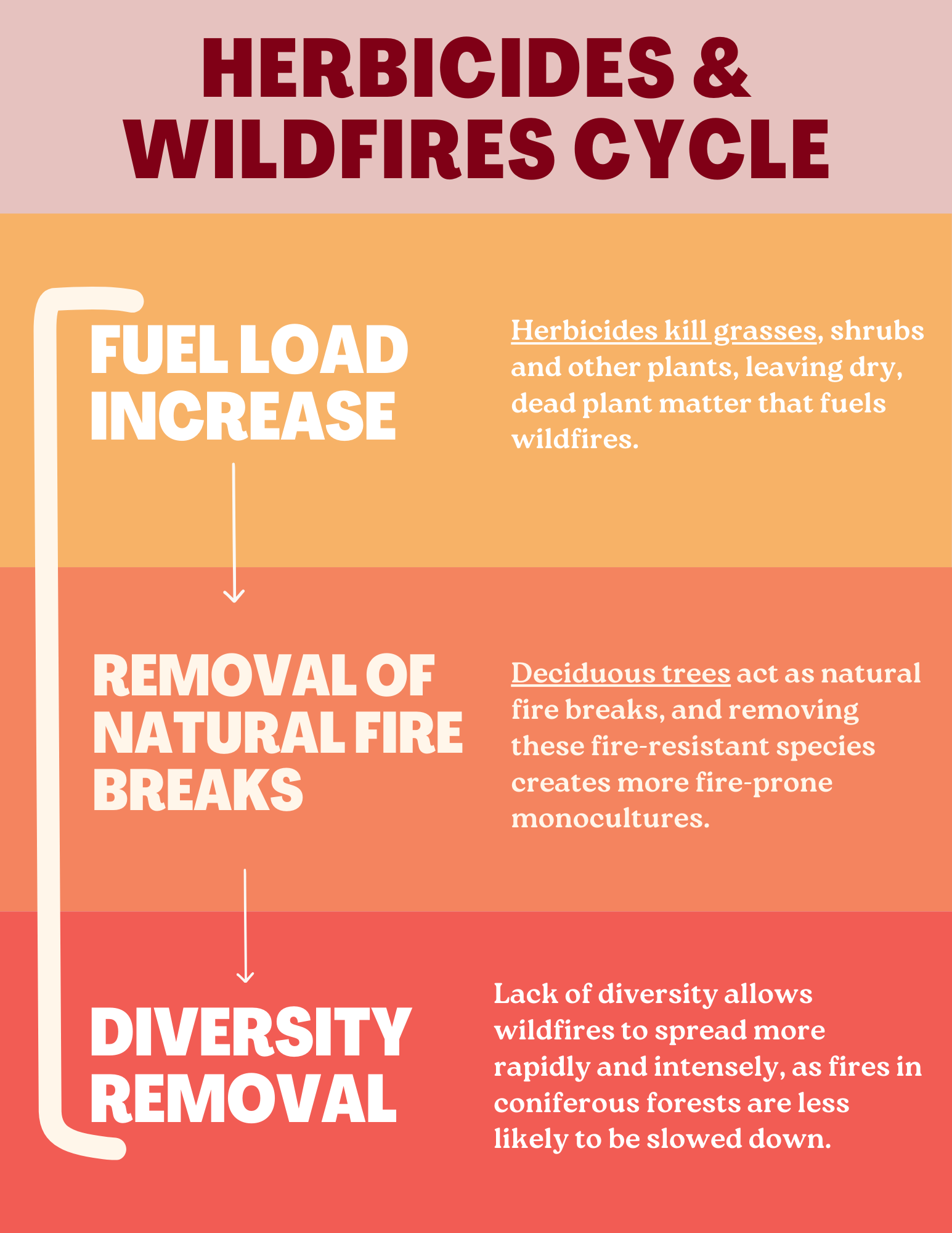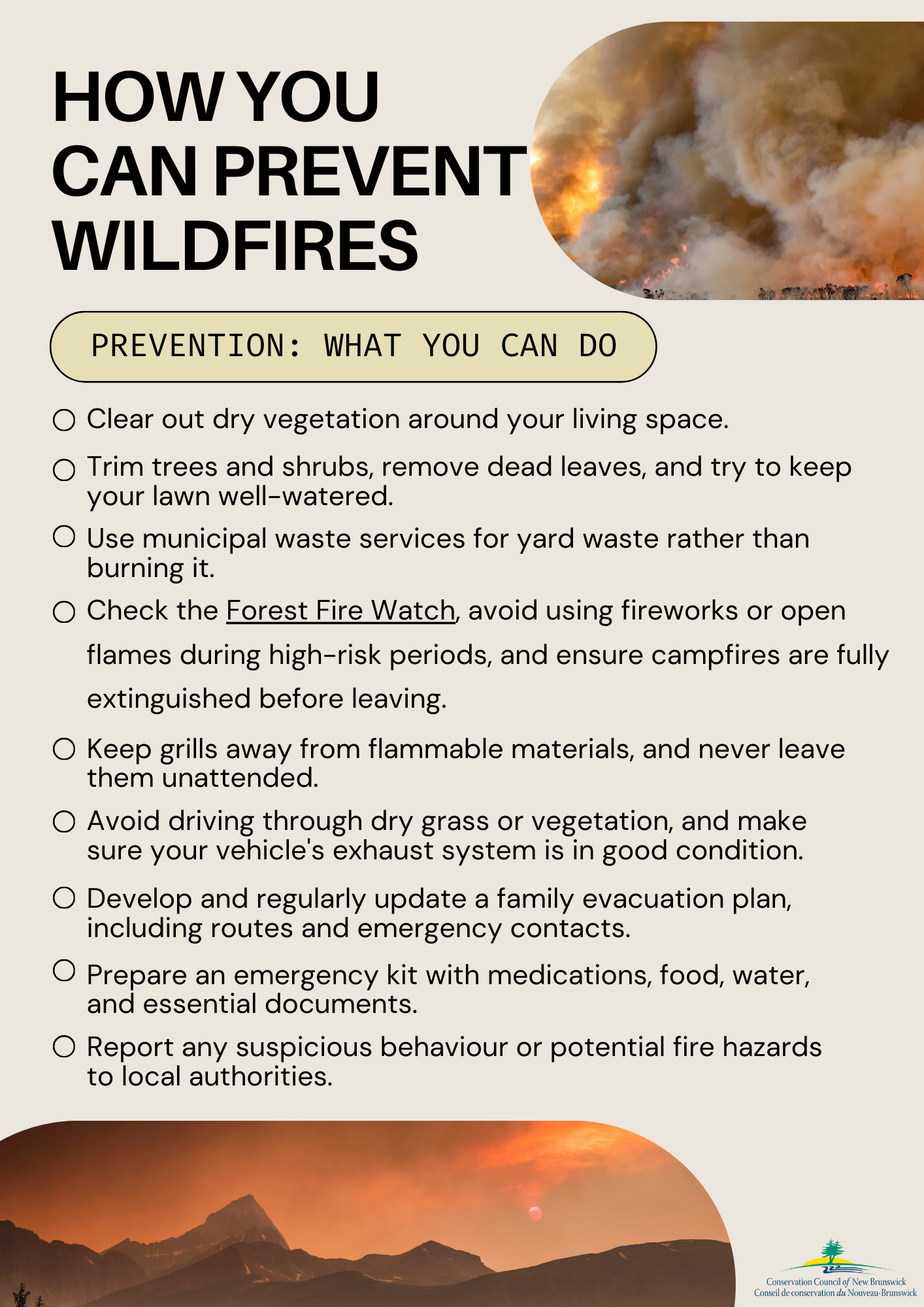BATTLING THE BLAZE
The growing threat of wildfires in a changing climate
Wildfires are not a simple issue. Rising temperatures and decreased rainfall from climate change is making them more frequent and intense. Climate change has significantly increased the likelihood of record-breaking high temperatures, low humidity and rapid snowmelt—all factors that fueled the intense wildfires in Eastern Canada in 2023.
However, some fires are a natural part of ecosystems, highlighting the complexity. In moderation, fires provide soil nutrients and help old-growth forests. Some trees, such as redwoods, have developed a flame-resistant bark which allows them to withstand many fires.
GET INSPIRED
Learn more about Karen’s experience participating in our Harm to Harmony program by watching the video above!
The Branch Out and Weave project
Karen Leblanc, an artist in residence with the Conservation Council’s From Harm to Harmony program, created a project called Branch Out and Weave for Climate Change, highlighting the complex story of forest fires. The project brought together community members weaving branches while sharing stories about their relationship with fire and its impact on their lives. After completing the weavings, the participants wrote down their wishes about the climate and burned the woven pieces they had created.
Photos of artwork from the Branch Out and Weave workshop
Canada experienced its worst wildfire season in recorded history in 2023
GET THE FACTS
Wildfires are the second most costly disaster in Canada. They also pose serious risks to human health and safety. Smoke from wildfires can cause respiratory problems, particularly for children, the elderly and those with pre-existing health conditions. Uncontrolled fires can destroy homes, displace communities and even result in loss of life.
Indigenous communities are also disproportionately impacted due to socioeconomic vulnerabilities, with ceremonial sites and natural resources also at risk.
When a wildfire occurs, it release particulate matter and greenhouse gas emissions that can contribute to climate change. Climate change leads to more frequent and severe wildfires and extends the season.
Here’s the facts you need to know.
Download a PDF version*
Reduce wildfires by preserving a variety of trees, like fire-resistant deciduous trees.
WHAT YOU CAN DO
Some wildfires benefit ecosystems, so we don’t need to prevent or put out every wildfire. However, we must limit uncontrolled and disastrous wildfires intensified by climate change that damage ecosystems and harm communities.
Being fire-smart and prepared for emergencies is crucial in mitigating the impact of wildfires. This includes creating defensible space around properties, having evacuation plans in place and staying informed about fire conditions.
Here are some ways to prepare for heavy smoke conditions:
- Carry a mask with you.
- Properly seal windows and doors.
Familiarize yourself with the following resources:
New Brunswick’s Forest Fire Watch monitors wildfires in the province. It has forest fire advisories, burning permit info, forecast maps, data and more.
The Air Quality Health Index (AQHI) summarizes the most recent Air Quality Health Index forecast values for many Canadian cities.
This Air Quality Map tracks hourly fine particulate matter (PM 2.5) observations across Canada.
WeatherCan app for weather warnings and air quality advisories in your area
Consider purchasing one or more certified, properly-sized portable air purifiers.
Check out how to prepare for wildfires in your community.
*Download a PDF version*


